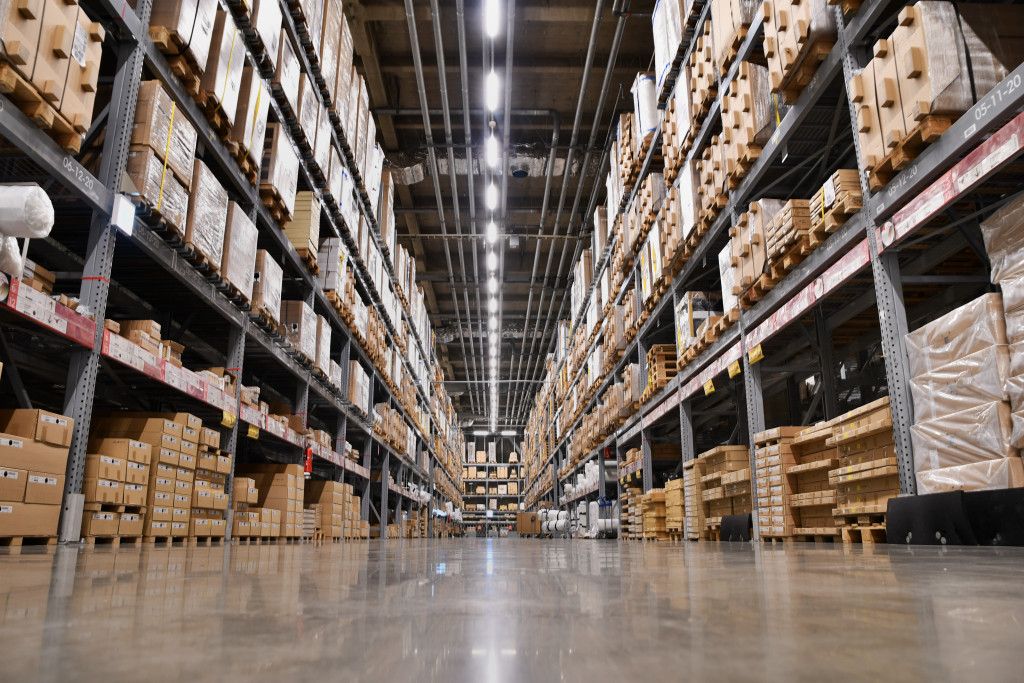- Starting a warehouse business can be profitable, but it requires planning, such as securing a suitable warehouse space.
- The warehouse’s location, size, and cost are essential for efficient operations.
- Investing in warehouse technology like WMS, AS/RS, and barcode scanning improves efficiency and reduces costs.
- Acquiring essential warehouse equipment like pallet jacks, racks, and safety equipment is vital for a safe and efficient operation.
Starting a warehouse business can be a profitable venture, especially considering the current boom in e-commerce. In the United States alone, e-commerce sales reached $870 billion in 2021, up from $374.88 billion, according to data from Statista. This significant growth in online sales has increased demand for warehouse space, driving up profitability. A CBRE report shows that the average annual return for industrial real estate, including warehouses, was 13.4% between 2010 and 2020, outperforming other real estate sectors. Therefore, investing in a warehouse can yield substantial financial returns in today’s growing digital economy.
As a result, you might think starting a warehouse is a no-brainer if you want to profit. However, the reality is that it isn’t as easy as it sounds. Before starting a warehouse business, you must do your due diligence and ensure you prepare. Here are a few resources to invest in when starting a warehouse business:
Warehouse Space

Securing a suitable warehouse space is fundamental to starting a warehouse business. The area you choose directly affects your operations, efficiency, and, ultimately, profitability. An adequately planned and located warehouse ensures smooth logistics, enabling the prompt delivery of goods and customer satisfaction.
Location
Location is paramount when selecting a suitable space for your warehouse business. It should be conveniently located near major highways, ports, or railway stations to facilitate easy and cost-effective transportation. Additionally, consider the local labor market, as you’ll need a skilled workforce to run the warehouse operations.
Size and Layout
The size and layout of your warehouse should accommodate your business needs, both current and future. It should have enough room to store your inventory, with additional space for expansion if necessary. The layout should be practical and efficient, allowing for smooth movement of goods and employees.
Cost
The cost of the warehouse space is another critical factor. While a strategic location and ample size are crucial, they should align with your budget. Remember to account for additional costs like maintenance, utilities, and potential lease increments.
Building Specifications
Finally, ensure the building specifications align with your business requirements. This includes ceiling height for storage, loading docks for shipping and receiving, and power requirements for warehouse machinery. Moreover, the facility should comply with safety and environmental regulations.
Invest in Technology

Investing in technology is an essential step in modern warehouse operations. With the rise of e-commerce and the increasing complexity of supply chains, warehouses now handle larger volumes of goods, necessitating efficient and accurate operations. Technological investments can facilitate this through warehouse management systems (WMS), automated storage and retrieval systems (AS/RS), barcode scanning, and other digital tools.
A WMS, for instance, can streamline warehouse operations, improve inventory control, and enhance order fulfillment. It provides real-time information about the status of goods in the warehouse, thus enabling better decision-making.
Through AS/RS, automation improves efficiency by reducing manual handling of goods. This speeds up operations and reduces the risk of errors and accidents.
Barcode scanning simplifies tracking inventory, making it quicker and more accurate. This can lead to significant cost savings by reducing inventory discrepancies.
By investing in technology, a warehouse business can increase productivity, reduce costs, and provide better customer service, thereby gaining a competitive edge in the market.
Get the Essential Pieces of Equipment
Acquiring the essential pieces of warehouse equipment is a critical step in starting a warehouse business. These tools are integral in ensuring the efficient and safe handling of goods within your warehouse. This ranges from pallet jacks and forklifts for lifting and moving heavy loads to sturdy pallet racks for warehouses that provide organized storage for your goods.
Sturdy pallet racks for warehouses are valuable as they allow optimal storage space utilization. They provide a safe and organized system for storing goods, which can significantly increase the warehouse’s capacity. Furthermore, these racks enable easy access to all pallets, facilitating efficient and timely order fulfillment thereby improving customer satisfaction.
Other essential equipment might include packaging and sealing machines for preparing goods for shipment, safety equipment like harnesses and helmets for employee protection, and cleaning equipment for maintaining a sanitary and safe working environment.
Investing in high-quality, durable warehousing equipment can improve your warehouse’s operation efficiency and create a safer working environment. This, in turn, can lead to greater productivity, reduced operational costs, and increased profitability.
Final Thoughts
Starting a warehouse business can be a lucrative and rewarding venture. However, to ensure success, it is essential to prepare adequately beforehand. This requires finding a suitable space that meets your needs, investing in technology for improved operations, and purchasing the necessary equipment for an efficient and safe working environment. These steps before launching your warehouse business can increase productivity and profitability while providing customers better service.

